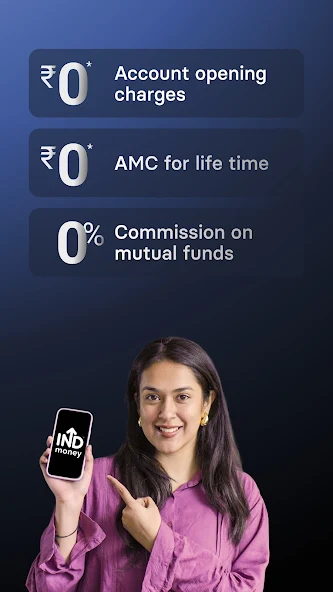Investing in the stock market has become more accessible than ever, thanks to the rise of the stock trading app. Whether you’re monitoring global markets or placing a quick trade during your commute, these tools simplify the entire process. A well-designed online trading app can empower you to stay informed and act promptly without being tied to a desktop platform.

With hundreds of apps available, selecting the right one may seem overwhelming. However, understanding your investment style and the features that support it will guide your decision. This outlines the critical elements to help you identify a trading app that suits your financial goals and daily routine.
Key Factors to Consider in a Stock Trading App
1. User Interface and Ease of Use
A smooth, responsive app interface plays a crucial role in your overall experience. Navigation should be logical, with clearly labeled features that don’t require multiple taps to execute a trade or access your watchlist. A beginner might prefer a minimal layout, while a seasoned trader may look for more detailed functionality within a clean structure.
2. Real-Time Market Data
Markets move fast, and delays can cost money. Look for an app that delivers accurate, real-time market data without lags. This includes live pricing, volume updates, and chart refresh rates. Instant notifications on market changes or order confirmations can also make a big difference in your trading success.
3. Security and Data Protection
Financial apps must maintain the highest security standards. Opt for platforms that offer app-specific PINs, biometric login options, and secure session logouts. Ensure your personal and banking information is stored safely with encrypted communication channels and monitored access.
4. Order Execution Speed
Timely execution can be the difference between gain and loss. The app should process buy or sell commands immediately without delays or failed orders during high volatility. Fast processing also ensures that your price points are closer to what you expect when initiating trades.
5. Investment Options and Flexibility
If you’re considering multiple asset types like equity, debt instruments, or even derivatives in the future, it’s better to choose an app that supports various instruments from the start. A flexible online trading app will give you room to expand your strategy without needing to switch platforms later.
Performance and Analytical Tools
1. Charting Tools and Technical Indicators
For anyone interested in reading trends, charts are essential. Look for an app that includes various chart types and built-in indicators such as MACD, Bollinger Bands, or moving averages. These tools help in developing strategies based on technical analysis rather than assumptions.
2. Market News and Analysis
A trading app with an integrated news section gives users an edge by keeping them updated on global financial developments. It’s also helpful when market summaries or expert commentaries are embedded directly within the interface to support decisions without switching to other platforms.
Costs and Fees
1. Brokerage Charges
Before committing to a platform, review how it handles commissions or trading fees. Some apps might promote low-cost trading but charge on specific orders or have tiered pricing models. If you trade often, these fees could impact your profitability, so compare carefully.
2. Hidden Fees
Aside from trading commissions, some apps may include charges for features such as portfolio reviews, access to advanced charts, or customer support. A transparent fee structure ensures you’re not caught off guard after starting to trade regularly.
Customer Support and Reliability
1. Technical Support Access
Even with an intuitive app, users might face issues or have questions. It’s important to have access to customer support that is responsive and knowledgeable. Look for platforms that offer easy access to help via chat or email within the app.
2. Stability and Uptime
A reliable trading app should function seamlessly during market hours. Downtime during critical trading windows can be costly and frustrating. Check whether the platform has a strong reputation for system stability, especially during periods of high market activity.
Educational Resources
1. Learning Materials
If you’re new to investing, educational content within the app can be a valuable feature. Good apps often include step-by-step tutorials, learning centers, or regular updates that help users improve their trading knowledge over time.
2. Demo Accounts
A demo or practice account lets you test the app’s functionality and refine your trading approach without risking actual capital. It also allows users to become familiar with the interface before executing live trades, which can boost confidence and reduce errors.
App Compatibility and Updates
1. Device Compatibility
Ensure that the app works efficiently on your current smartphone or tablet. It should be well-optimized for different operating systems and provide consistent updates that improve both speed and security.
2. Regular Updates
Consistent updates show the app is actively maintained and evolving with user needs. These updates may include feature improvements, bug fixes, or enhancements to the user experience. A frequently updated app is more likely to stay relevant and secure over time.
Making the Final Choice
Your decision should be based on how well the app aligns with your investing habits and lifestyle. Whether you’re trading weekly or monthly, your chosen platform should provide stability, ease of use, and timely data. Try multiple apps if needed before settling on the one that offers both performance and comfort.
Remember, the goal isn’t just to find a trading app — it’s to find one that improves the quality of your investing experience. An app should act as a well-designed bridge between your goals and the opportunities in the market.
Conclusion:
Finding the ideal stock trading app requires thoughtful comparison of features, security, functionality, and compatibility. A reliable online trading app can streamline your investing process, helping you make smarter decisions from your mobile device.
Take time to explore different platforms, assess how they align with your goals, and test their performance. The right app will not only support your trades but also enhance your understanding and control over your investments. Once equipped with the right tool, you can invest with greater confidence and clarity.
Recent Comments